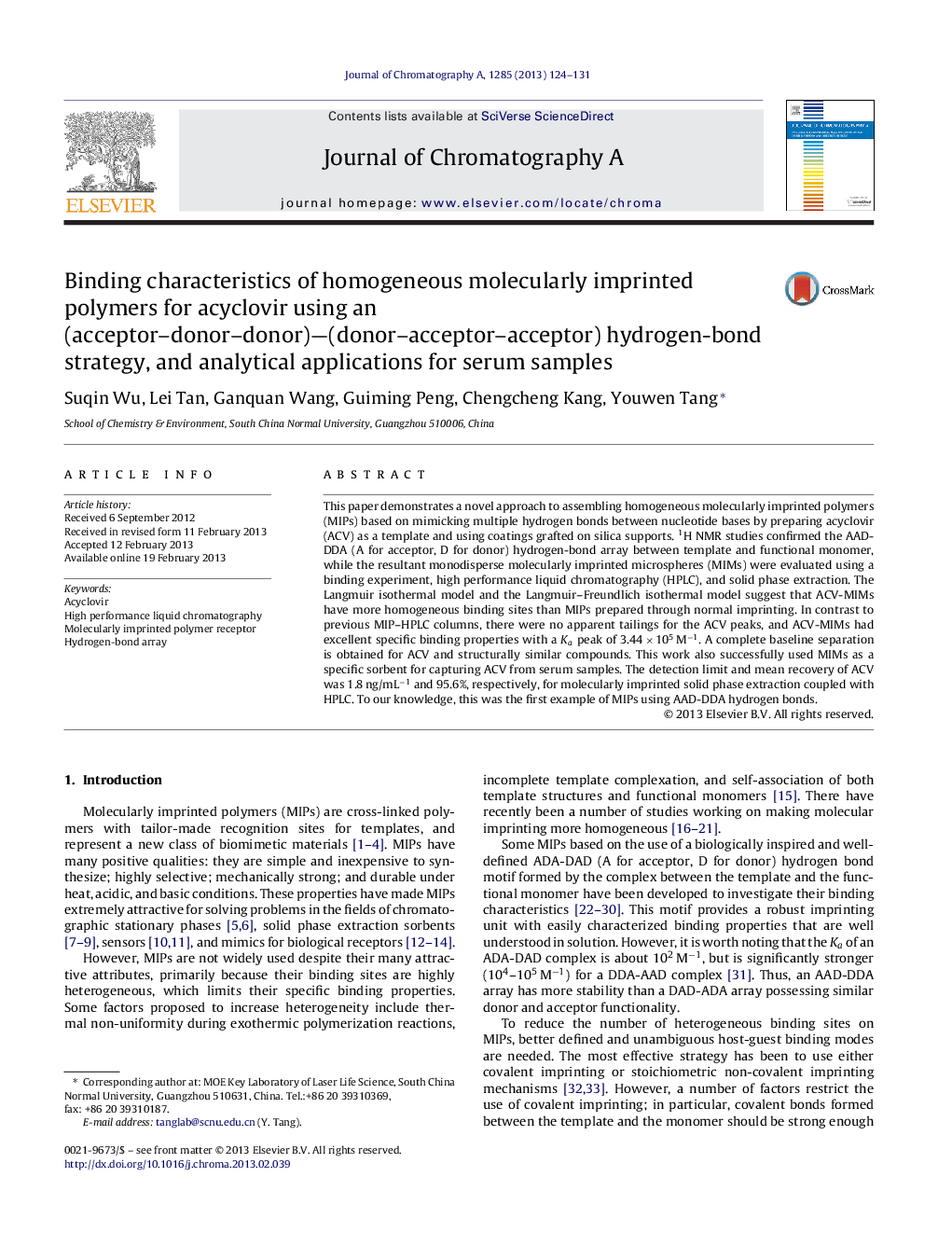| Article ID | Journal | Published Year | Pages | File Type |
|---|---|---|---|---|
| 1201753 | Journal of Chromatography A | 2013 | 8 Pages |
This paper demonstrates a novel approach to assembling homogeneous molecularly imprinted polymers (MIPs) based on mimicking multiple hydrogen bonds between nucleotide bases by preparing acyclovir (ACV) as a template and using coatings grafted on silica supports. 1H NMR studies confirmed the AAD-DDA (A for acceptor, D for donor) hydrogen-bond array between template and functional monomer, while the resultant monodisperse molecularly imprinted microspheres (MIMs) were evaluated using a binding experiment, high performance liquid chromatography (HPLC), and solid phase extraction. The Langmuir isothermal model and the Langmuir–Freundlich isothermal model suggest that ACV-MIMs have more homogeneous binding sites than MIPs prepared through normal imprinting. In contrast to previous MIP–HPLC columns, there were no apparent tailings for the ACV peaks, and ACV-MIMs had excellent specific binding properties with a Ka peak of 3.44 × 105 M−1. A complete baseline separation is obtained for ACV and structurally similar compounds. This work also successfully used MIMs as a specific sorbent for capturing ACV from serum samples. The detection limit and mean recovery of ACV was 1.8 ng/mL−1 and 95.6%, respectively, for molecularly imprinted solid phase extraction coupled with HPLC. To our knowledge, this was the first example of MIPs using AAD-DDA hydrogen bonds.
► The first example of MIPs prepared using AAD-DDA hydrogen bonds. ► Designed and synthesized a new functional monomer allyl-cytosine. ► To obtain more homogeneous MIPs using non-covalent interactions between host and guest.
